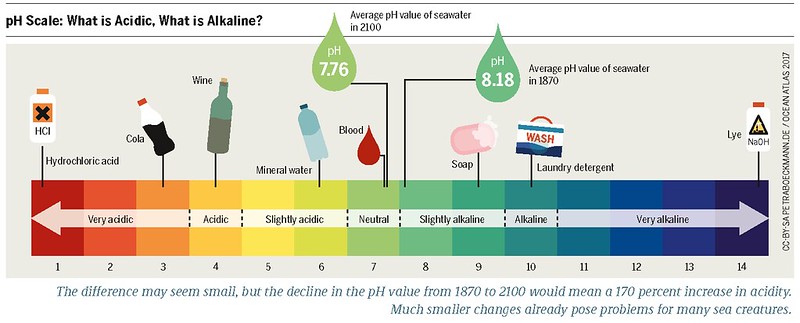The pH of a potassium hydroxide (KOH) solution in water is determined by the concentration of the KOH and the subsequent concentration of hydroxide ions (OH-) in the solution. KOH is a strong base, which means it fully dissociates in water, releasing hydroxide ions. The pH of a KOH solution is typically high, ranging from 10 to 13, but the exact value depends on the concentration of the KOH in the solution.
Understanding the pH of KOH Solutions
The pH of a KOH solution can be calculated using the formula pH = 14 – pOH, where pOH is the negative logarithm of the hydroxide ion concentration. For example, a 0.0067 M KOH solution has a pH of approximately 11.83, while a 0.033 M KOH solution has a pH of 12.52.
Factors Affecting the pH of KOH Solutions
When using KOH solutions, it is essential to consider the potential presence of contaminants, chemicals, or substances that can affect the pH. For instance, carbon dioxide (CO2) from the air can dissolve in water and form carbonic acid, lowering the pH. To minimize this effect, it is recommended to use freshly prepared KOH solutions and store them in airtight containers.
Adjusting the pH of KOH Solutions
If the pH of a KOH solution is too high or too low due to contamination, it can be adjusted using acid or base solutions. For example, adding a strong acid like hydrochloric acid (HCl) can lower the pH, while adding a strong base like sodium hydroxide (NaOH) can raise the pH. However, when dealing with KOH solutions, it is crucial to exercise caution, as these substances can cause burns and eye damage.
Calculating the pH of KOH Solutions
The pH of a KOH solution can be calculated using the following steps:
- Determine the concentration of the KOH solution.
- Calculate the concentration of hydroxide ions (OH-) using the formula: [OH-] = [KOH].
- Calculate the pOH using the formula: pOH = -log[OH-].
- Calculate the pH using the formula: pH = 14 – pOH.
Here’s an example calculation for a 0.0067 M KOH solution:
- Concentration of KOH: 0.0067 M
- [OH-] = [KOH] = 0.0067 M
- pOH = -log[OH-] = -log(0.0067) = 2.17
- pH = 14 – pOH = 14 – 2.17 = 11.83
Storing and Handling KOH Solutions
When working with KOH solutions, it is crucial to follow proper safety protocols. KOH is a corrosive substance that can cause severe burns and eye damage. Always wear appropriate personal protective equipment, such as gloves and goggles, when handling KOH solutions.
Store KOH solutions in airtight containers to prevent the absorption of carbon dioxide from the air, which can lower the pH. Keep the solutions away from heat, sparks, and open flames, as KOH can react with certain materials.
Conclusion
The pH of a potassium hydroxide (KOH) solution in water is determined by the concentration of the KOH and the subsequent concentration of hydroxide ions (OH-) in the solution. KOH is a strong base, and the pH of a KOH solution is typically high, ranging from 10 to 13. When working with KOH solutions, it is essential to consider potential contaminants and adjust the pH if necessary. Proper safety protocols must be followed when handling KOH solutions to prevent injury.
References:
– Toppr.com – The pH of Normal KOH
– Socratic.org – What is the pH of a 0.0067 M KOH solution?
– YouTube – Calculating the pH of a Strong Base
– ThoughtCo – Calculating the pH of a Strong Base Problem
– Wyzant.com – What is the pH of a 0.033 M KOH solution?

